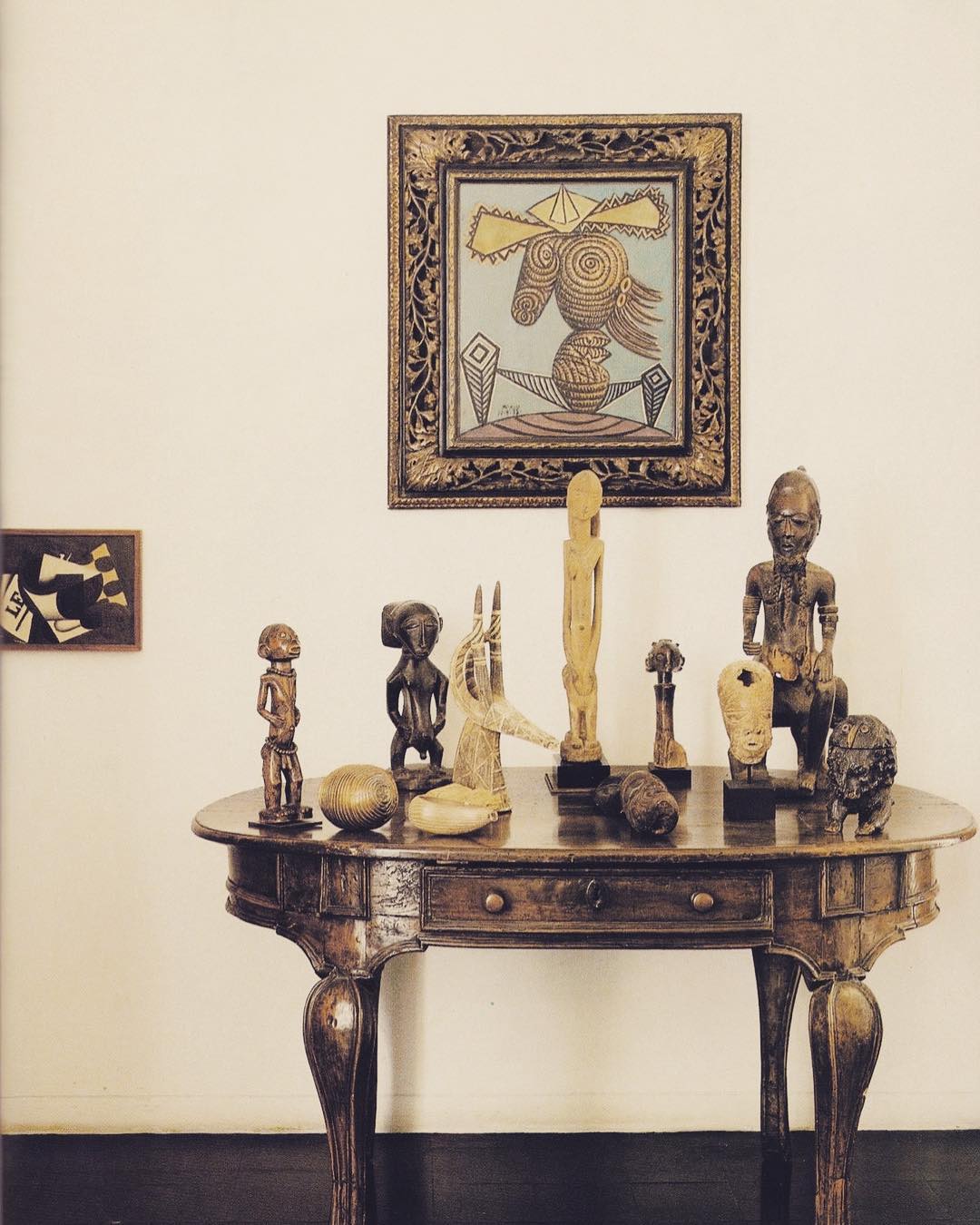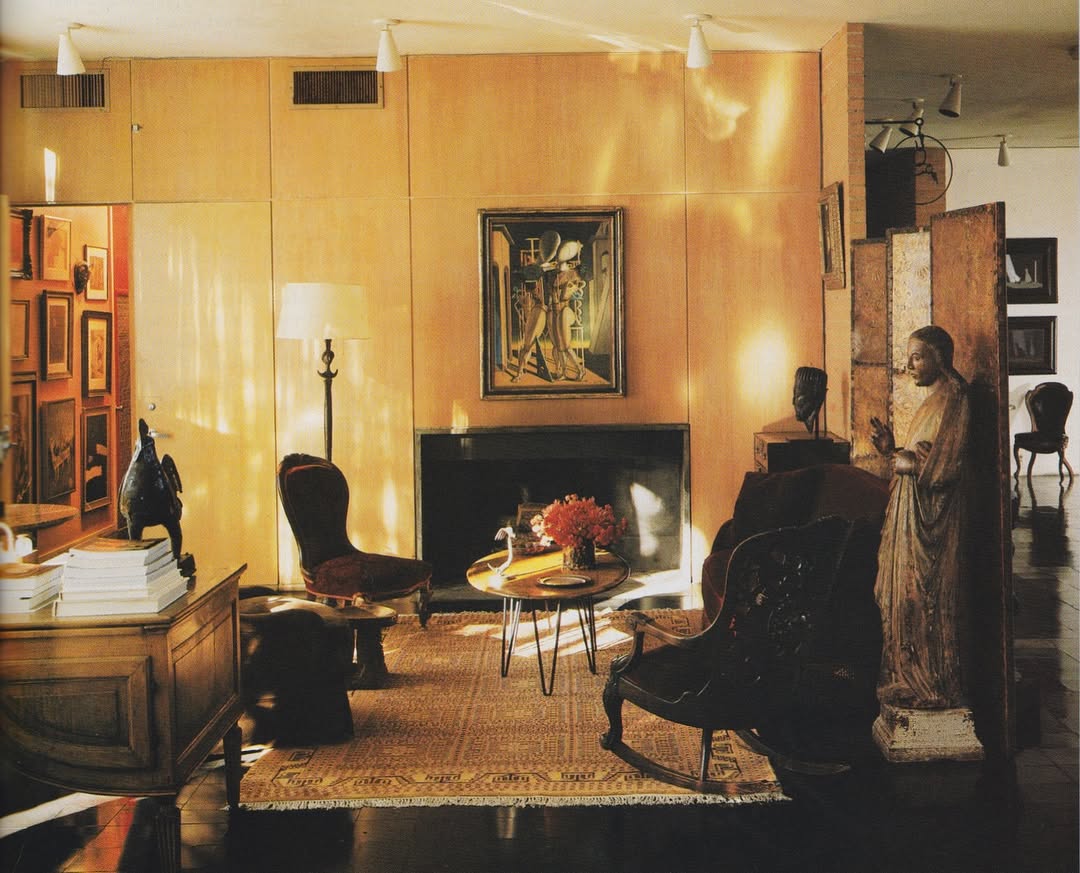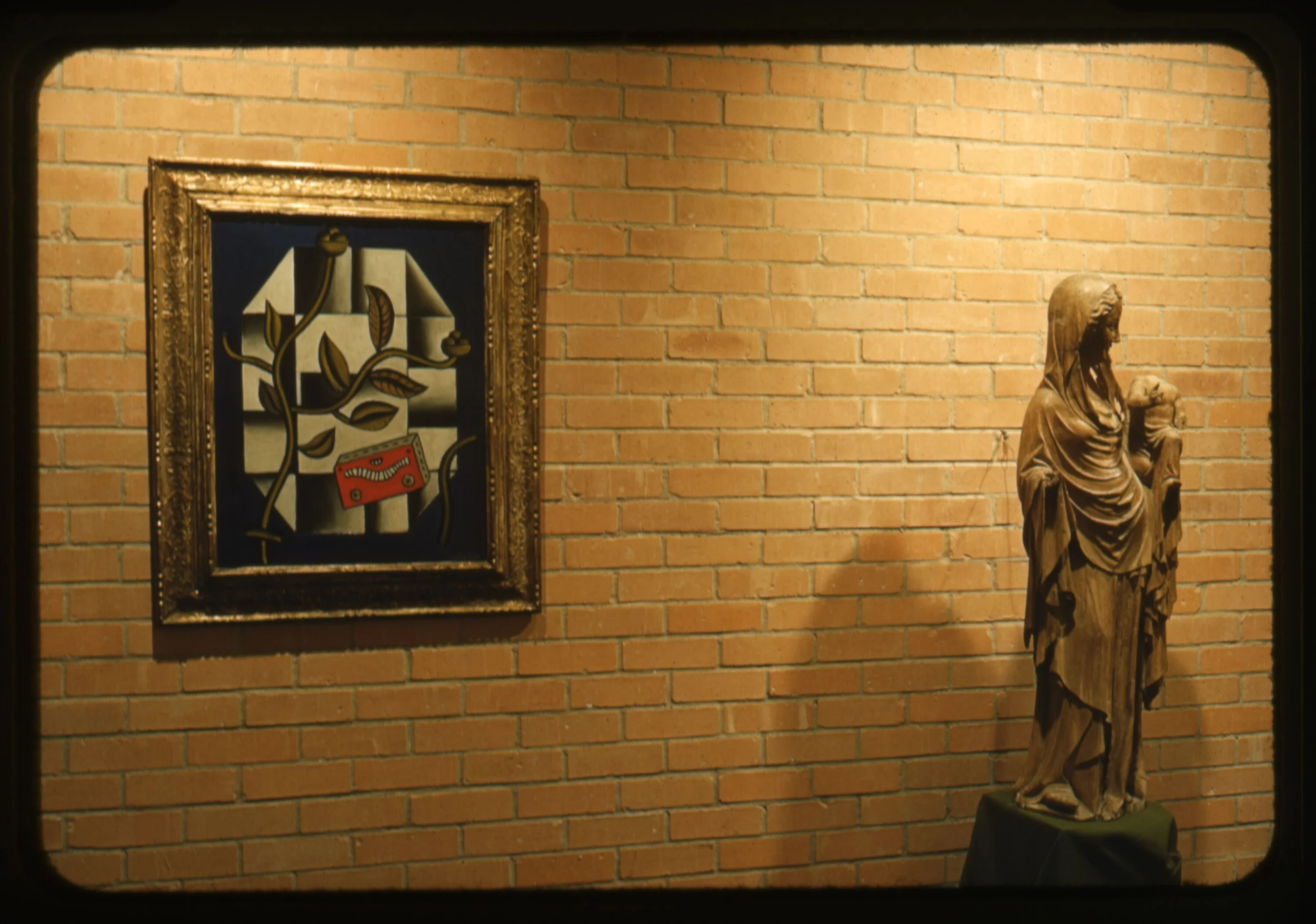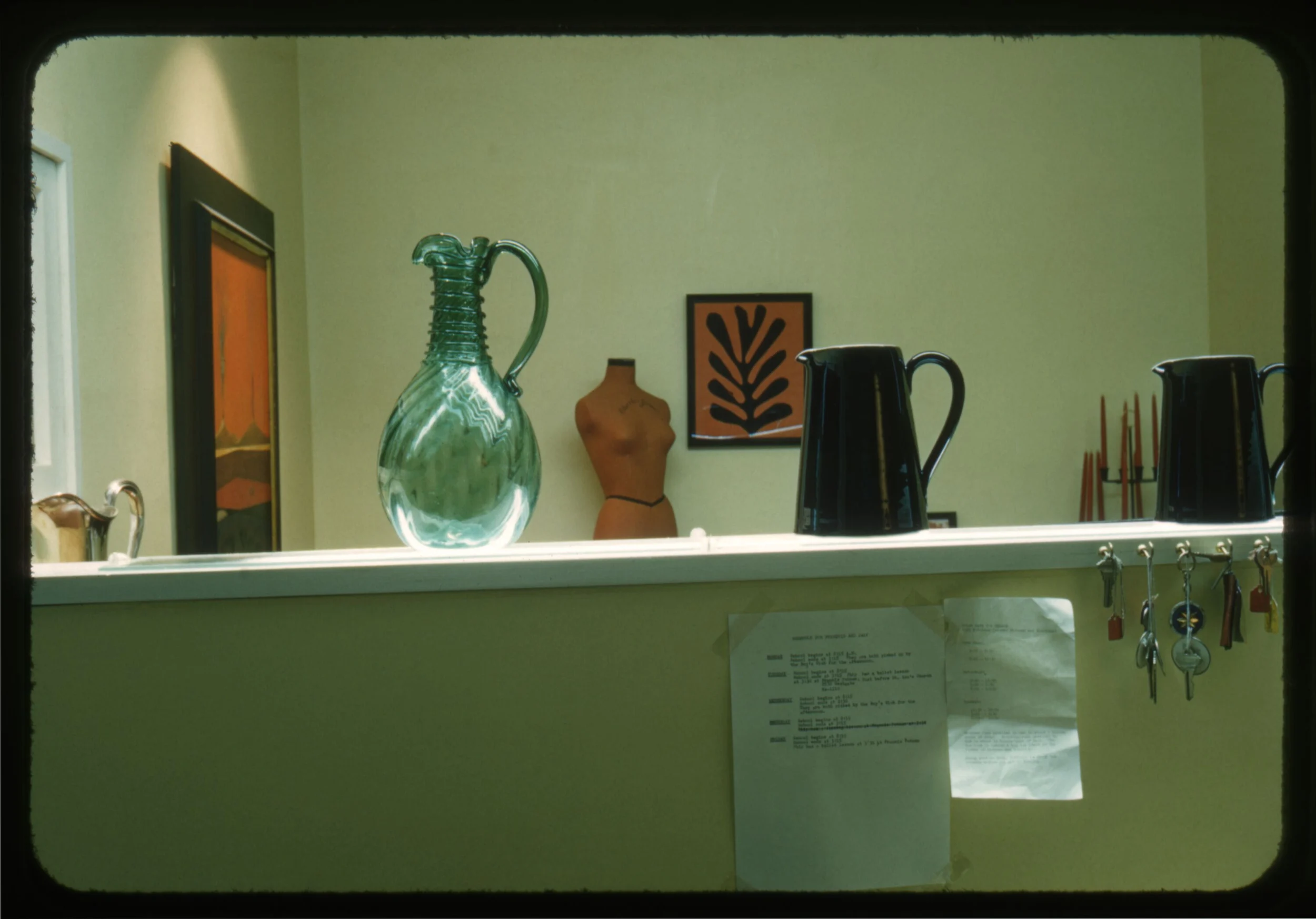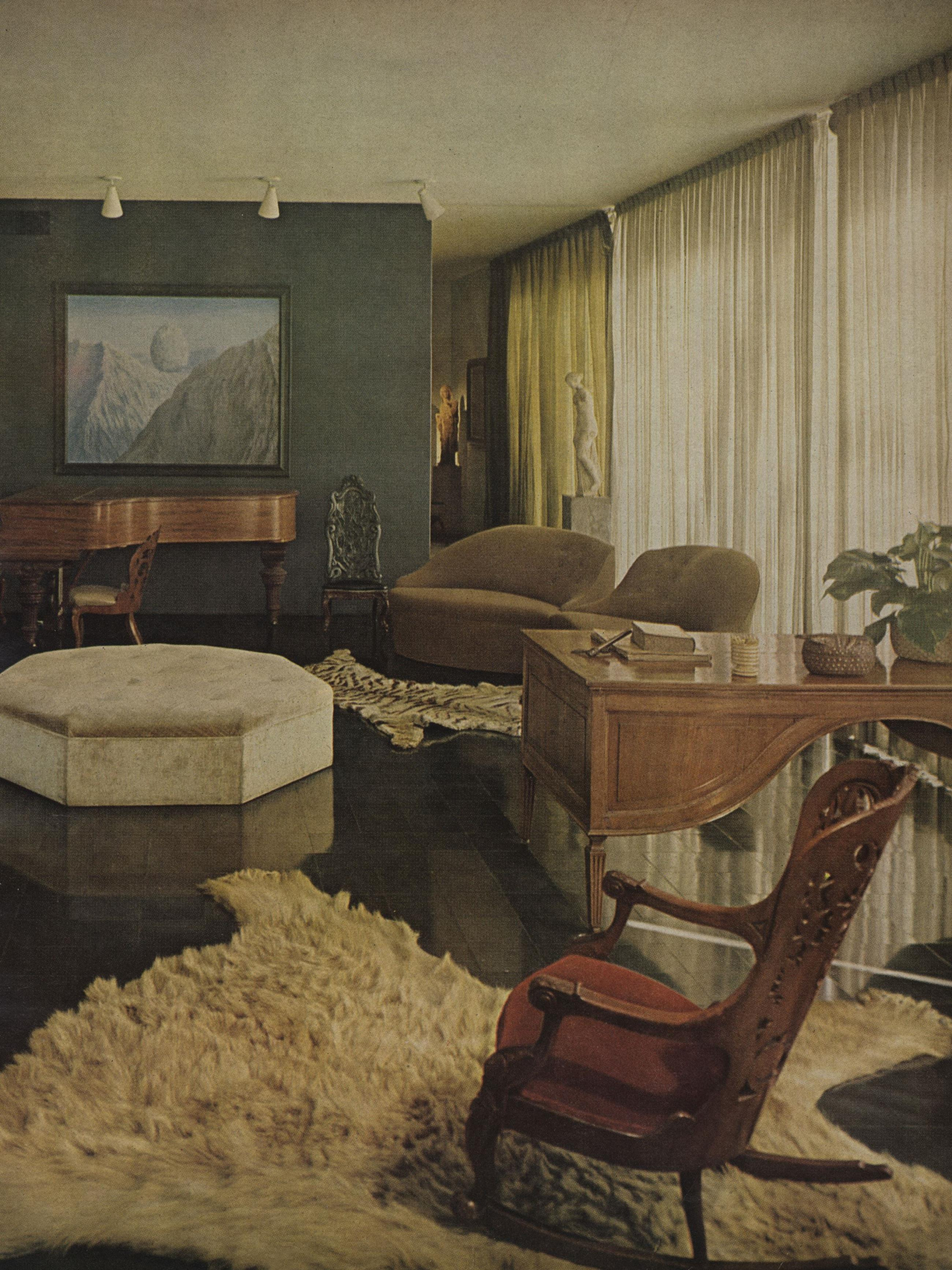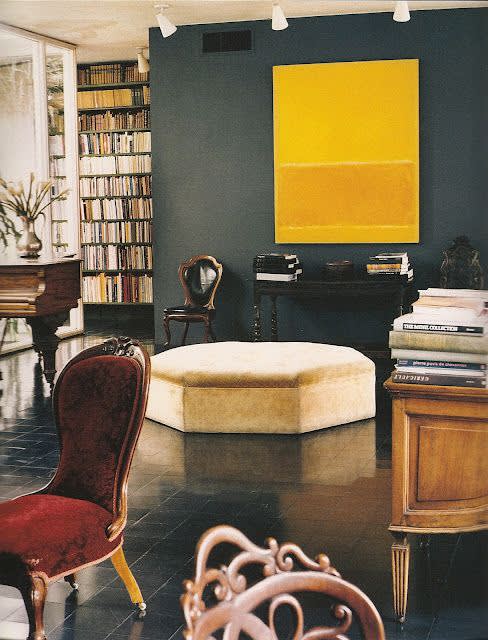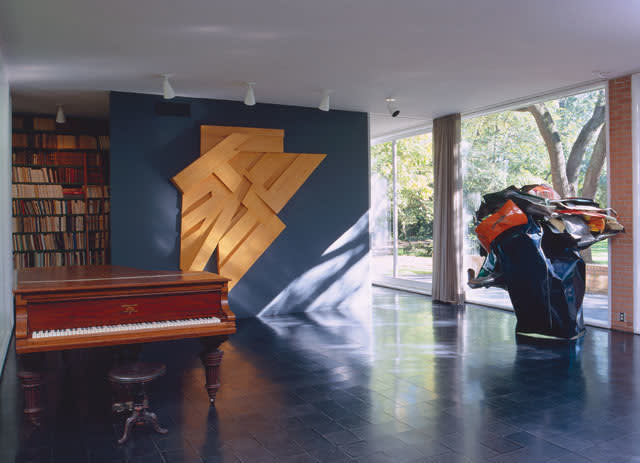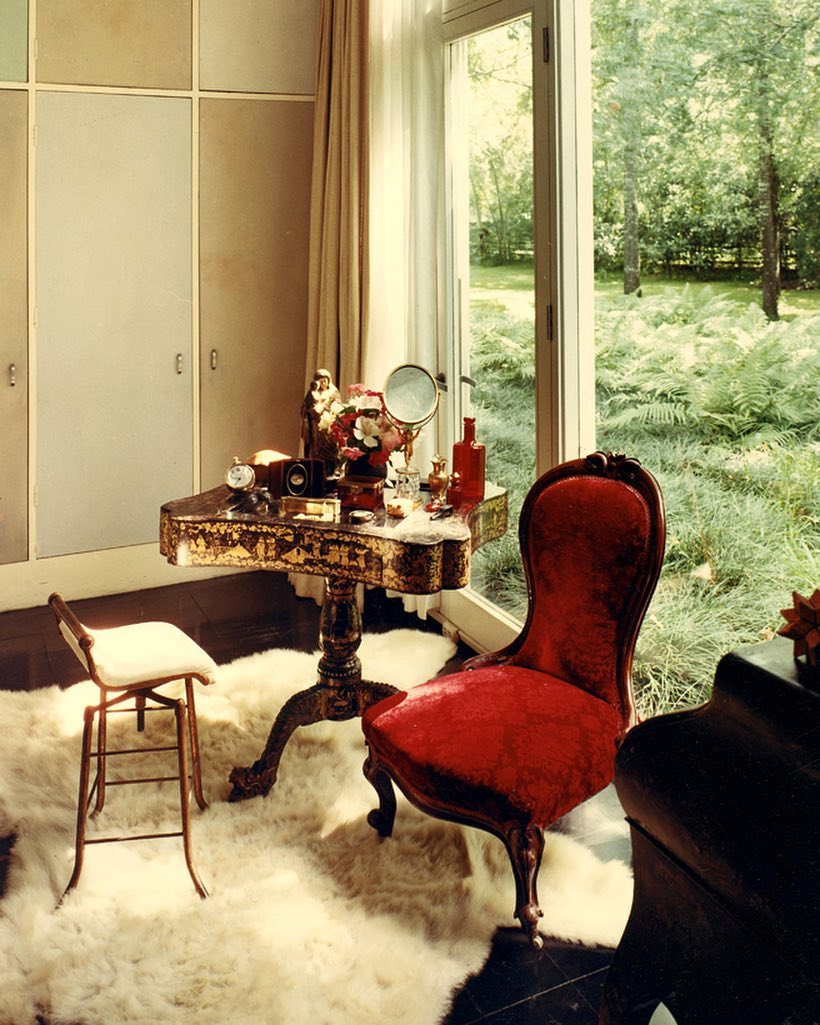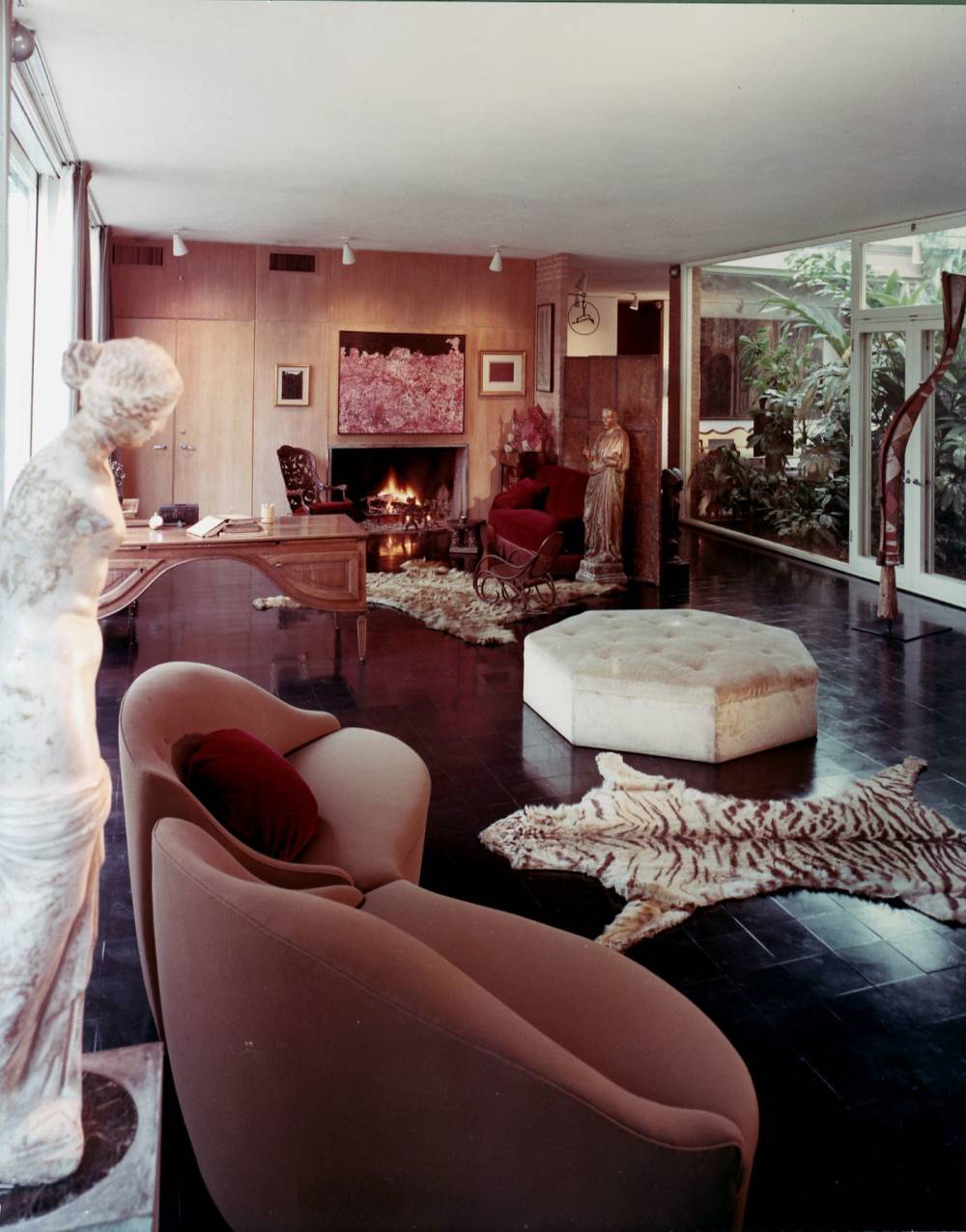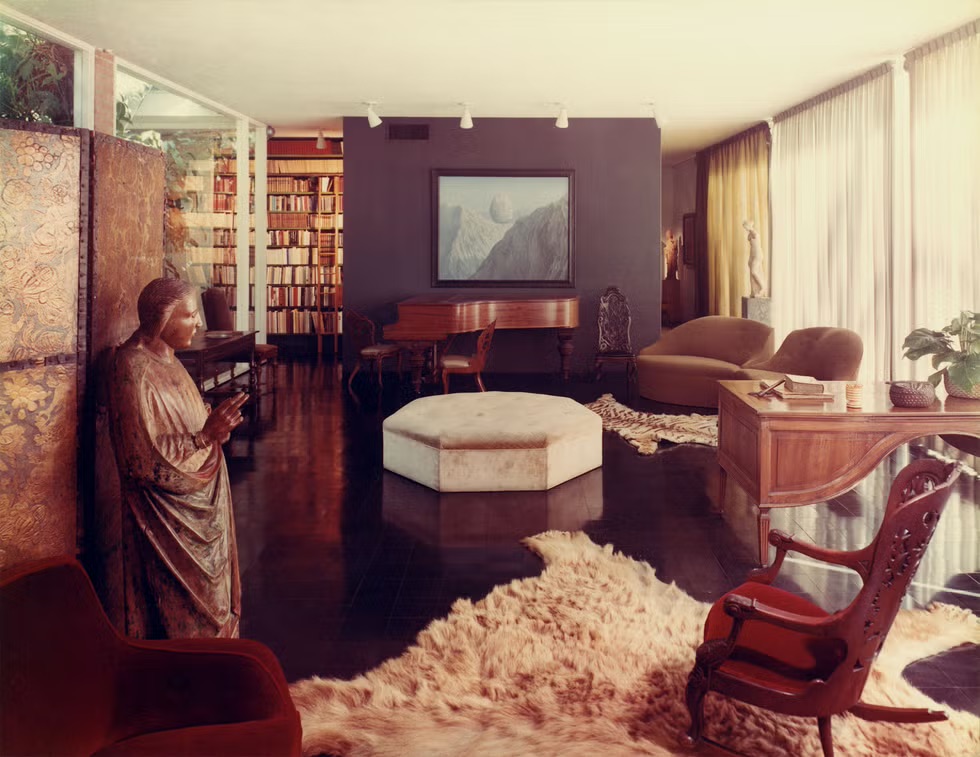The Collector: Dominique and John de Menil
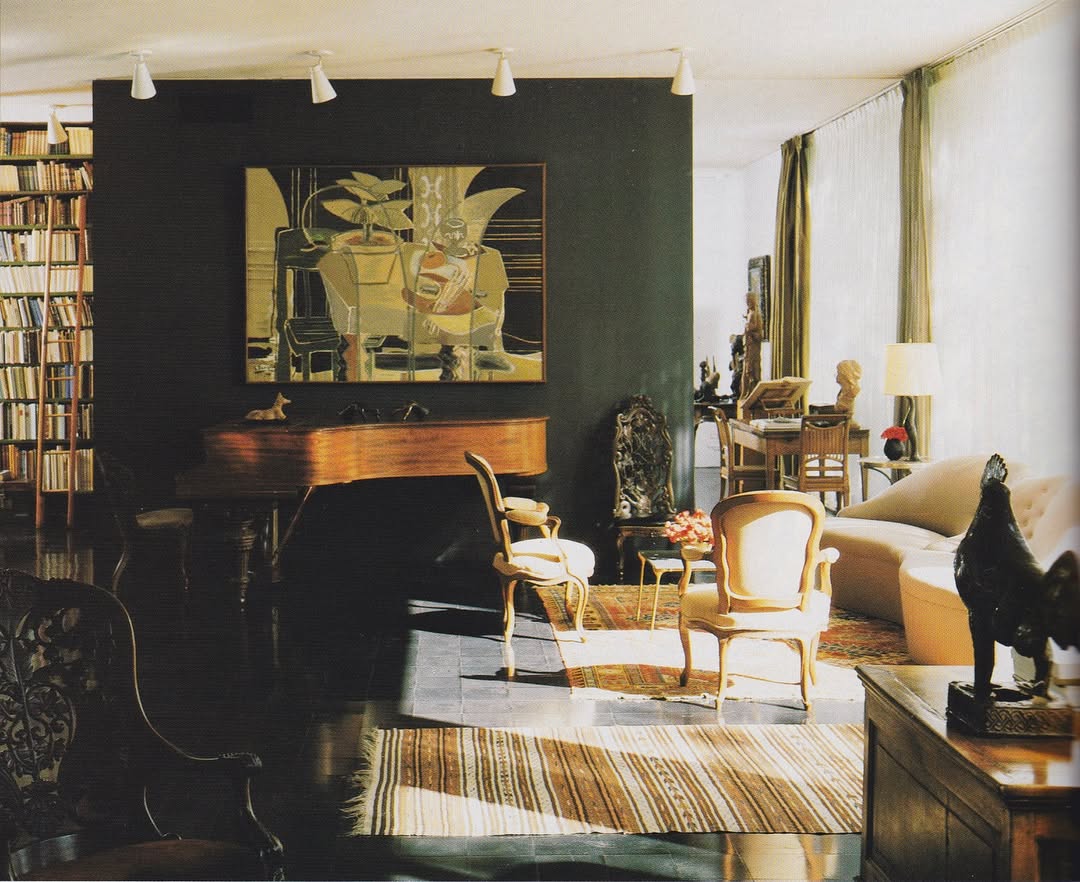
The Collector08.20.2025
Often considered the “Medici family” of modern art, Dominique and John de Menil established a singular style of modernism paired with an appreciation for antiquity. The couple filled their legendary Houston home with African sculpture, Cycladic idols, Etruscan objects, polychrome wood statues of the Madonna, Cubist, Surrealist, and Abstract masterpieces by Picasso, Magritte, Rothko, and others. [1]
In 1931, John de Menil, a Parisian investment banker, married Dominique Schlumberger, the daughter of a prominent French industrialist family. [2] In between wars, the couple took their first steps toward becoming collectors, buying 16th century Russian Orthodox iconography, a painting by contemporary French Christian Bérard, and textiles from New Guinea. [3] They also commissioned a portrait of Dominique by Max Ernst but despised the Surrealist result and hid the work. [4]
Their real artistic education began in 1941 in New York, where they landed after fleeing occupied France. There, they befriended Father Marie-Alain Couturier, an artistically-inclined Dominican priest who introduced the de Menils to the city’s leading museums and galleries. Their first serious purchase was a Cezanne watercolor, “Montagne” (1895), from the Valentine Gallery in New York. Around that same time, the couple met Alexander Iolas, a ballet dancer–turned–art dealer, who helped them acquire works by Ernst—whose work they now appreciated—and Magritte. Father Couturier encouraged the de Menils to understand that their collection should enrich the lives of others. “Father Couturier was an ascetic, but he certainly was not a puritan,” Dominique said. “He cured me of my puritanical block against collecting. He made it an obligation for us—a moral obligation—to buy good paintings, if and when we could afford it.” [5]
By 1941, they had moved to Houston where Schlumberger Ltd., the oil-drilling-equipment empire founded by Dominique's father and uncle, was based. In 1948 they offered the young architect Philip Johnson his first private commission to design a home for their family in the wealthy and conservative River Oaks neighborhood. Finished in 1950, Johnson’s home for the de Menils is understated on the outside and eclectic on the inside thanks to elegant and warm interiors created by the fashion designer Charles James, including a “lips” sofa inspired by a Man Ray painting. [6]
“I feel like I am with friends, trading fond recollections, and, as one often does, I am telling you how we got drunk,” John said during a 1964 lecture titled “The Delight and the Dilemma of Collecting.” “Because that’s what it is. Art is intoxicating. It is not a rarefied nicety—it’s hard liquor.” [3]
Though the couple were involved with arts organizations like the Museum of Modern Art, where John served on the board, the couple made a conscious decision to focus on Texas. Their local endeavors include the nondenominational Rothko Chapel and the Institute for the Arts at Rice University. After John died in 1973, Dominique continued their plans to establish a museum to house their collection. Designed by Renzo Piano, the Menil Collection opened in 1987.
All five of John and Dominique de Menil’s children inherited their parent’s interest in art and architecture. “In some ways it could be said I grew up in a museum,” said the fourth child, François, an architect and former filmmaker. As shown in a 1992 spread in “House and Garden,” the New York apartment de Menil shared with his wife and business colleague, Susan, was filled with works by Matisse, de Chirico, Picasso, and Rothko. [7]
“The things I've collected resemble the sort of works my parents acquired, but maybe less broad in range and less expensive,” he told the “New York Times” in 1986. [2] “I was fortunate to be exposed to their interest in art as part of the natural fabric of life. We—my brothers and sisters and I—each have a different focus. But we are definitely a collection of people very much influenced by John and Dominique. Their fervor spilled over into us. It was inescapable. There was a moral obligation to get involved with their involvements. They were compelling.”
SOURCES
[1] Johnson Sweeney, James. “Collectors’ House: The De Menils’ Affair With Art.” Vogue, April 1, 1966.
[2] Glueck, Grace. “The De Menil Family: The Medici of Modern Art.” The New York Times, May 18, 1986. www.nytimes.com/1986/05/18/magazine/the-de-menil-family-the-medici-of-modern-art.html
[3] Middleton, William. “How the De Menil Family Raised Good Taste to an Art Form.” Town & Country, April 2018
https://www.townandcountrymag.com/leisure/arts-and-culture/a18929606/de-menil-family-collection/
[4] Pierron, Séverine. “The Secret History of Dominique and John de Menil, Legendary Patrons of the Centre Pompidou.” February 14, 2025.
https://www.centrepompidou.fr/en/pompidou-plus/magazine/article/the-secret-history-of-dominique-and-john-de-menil-legendary-patrons-of-the-centre-pompidou
[5] Middleton, William. “The High Society Love Story Behind Dominique and John De Menil’s Legendary Art Collection.” W Magazine, March 7, 2018. https://www.wmagazine.com/story/dominique-john-de-menil-art-collection
[6] Middleton, William. “A House That Rattled Texas Windows.” The New York Times, June 3, 2004.
https://www.nytimes.com/2004/06/03/garden/a-house-that-rattled-texas-windows.html
[7] Schmertz, Mildred F.. "Domesticating Art." House and Garden, March 1992
Photos courtesy of the Menil Archives, The Menil Collection, Houston
Image: Georges Braque, “Large Interior with Palette” (1942)
